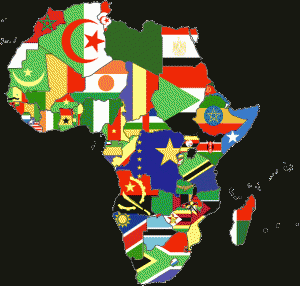 Africa, a continent so large that India, China and the United States combined could easily fit within its footprint. A place rich in culture, natural resources and opportunity. Yet, as companies look at Africa for investments, either for profit or social, the immense scale and diversity of issues makes it daunting.
Africa, a continent so large that India, China and the United States combined could easily fit within its footprint. A place rich in culture, natural resources and opportunity. Yet, as companies look at Africa for investments, either for profit or social, the immense scale and diversity of issues makes it daunting.
The Conference Board’s Global Social Investing Council conducted a session to better equip its members with an understanding of Africa. The group heard a distinguished panel from the Corporate Council on Africa, Last Mile Health, KPMG Center of Excellence for Development, The World Bank and Medtronic. They discussed the social infrastructure, economic development, long term social investment, lessons learned and policies that carries us from disaster response to strategic involvement; and the roles that corporations and their social investment commitments can play in Africa’s support.
To help ground the group, it was noted that often people refer to “issues related to India, Africa, China, etc… Africa is referred often as a single unit as if it is a country.” It has 54 countries with many languages, cultures, political systems, economies, levels of development, terrain and climates. Today it has a population of 1.1 billion people. It has 33% of the world’s poor despite 11% of the population. 783 million lack clean drinking water. 37% live in cities. Only 15 countries have gone through the last 10 years without conflict. Close to 50% are underemployed or unemployed. Looking ahead, by 2100, it is anticipated that Africa’s population will have quadrupled while much of the rest of the world’s will have shrunk (including China, India will have plateaued. Asia will peak in 50 years). Nigeria will grow 8 fold.
Power is a leading issue that if corrected could be a solution to many problems. Power generation capacity is grossly inadequate and is about the same as the country of Spain. 600 million people don’t have access to power. Currently fossil fuels provide 75% of generating capacity. For those who have access to power, its availability is inconsistent. Power outages cause havoc with water pumps, refrigeration, lighting and other infrastructure needed to operate businesses and for basic human needs. Foreign investment is helping though. 34% of Chinese investment in Africa is now in power.
With 54 countries, the continent is divided by many borders. Regionalization would help transportation, (including shipping of goods), communications, regulations and planning. Trains stop at boarders. Customs fees vary. If flying between countries, its often easier to fly to Europe, change planes and fly back to a neighboring country. A transcontinental power grid would help to provide consistent power and service to many areas that currently go without.
The picture is not all bleak, in fact far from it. Investment in infrastructure has tripled in the last decade. Mobile use is growing at more than 40% a year, twice the global growth rate. There is dramatic increase in private sector investment, although it is concentrated in a few countries.
Investing in Africa is not easy. There is a lot of hype. Development is uneven. Investing in Africa requires a partner on the ground to help maneuver. There is often conflict between the government and the private sector. Corruption hinders business. Although social media is bringing awareness and helping to decrease bad practices and bringing more accountability.
There is a movement towards urbanization. It’s an opportunity, but also a threat. There is social disruption caused by development. A move from agrarian to urban can cause culture wars and the elimination of connections to the past. One of the benefits of urbanization was seen with the Ebola crisis. If you got sick in the city, you might get treated. If you got sick in a rural area, not only were you most likely not treated, you died and the disease spread and then into other villages. No clinic, no power, no communications/internet. To date, in total, 10,000 died, 25,000 were infected reeking billions of dollars of economic damage.
The public sector can and should provide the foundation for the private sector to succeed and provide growth. There is a lack of financing available. Lending to the private sector is not a tradition and it’s hard to get foreign banks to back loans. But it is not impossible and the availability of funding is increasing. Intellectual capital is also needed. There is a shortage of capacity implementation experience and a problem with executing at scale fast enough. Yet, Africa and Africans, rich in natural and intellectual resources and potential capacities, need to be included as leadership to external investment and seen as intellectual peers with capacity for self-determination.
So what can companies do? Invest in power. Support education. Provide economic opportunity for young people. Fund healthcare. Healthcare is often left off the table when talking infrastructure. Healthcare contributes to economic growth. Medical schools are needed to train workers and clinics need to be built. We see micro economies growing with new entrepreneurs establishing businesses every day. Technology is breaking down barriers even if governments are not. There are multi-national organizations doing well in Africa and doing good. The organizations represented on the panel, as well as many others, provide valuable resources in helping to invest in Africa. The Sustainable Development Goals will also be a roadmap for responsible involvement.
http://www.africacncl.org/
https://www.africare.org/
http://lastmilehealth.org/
